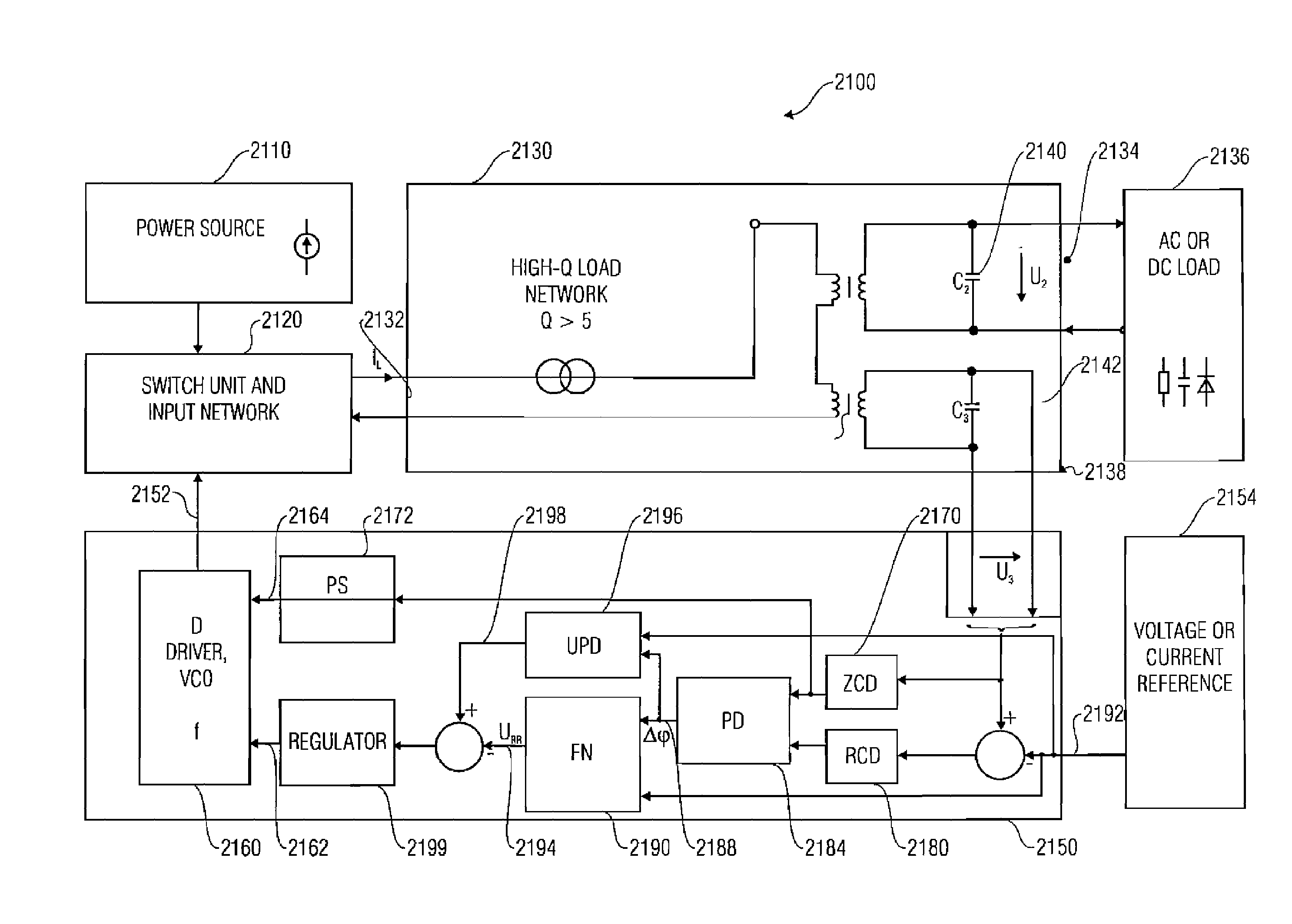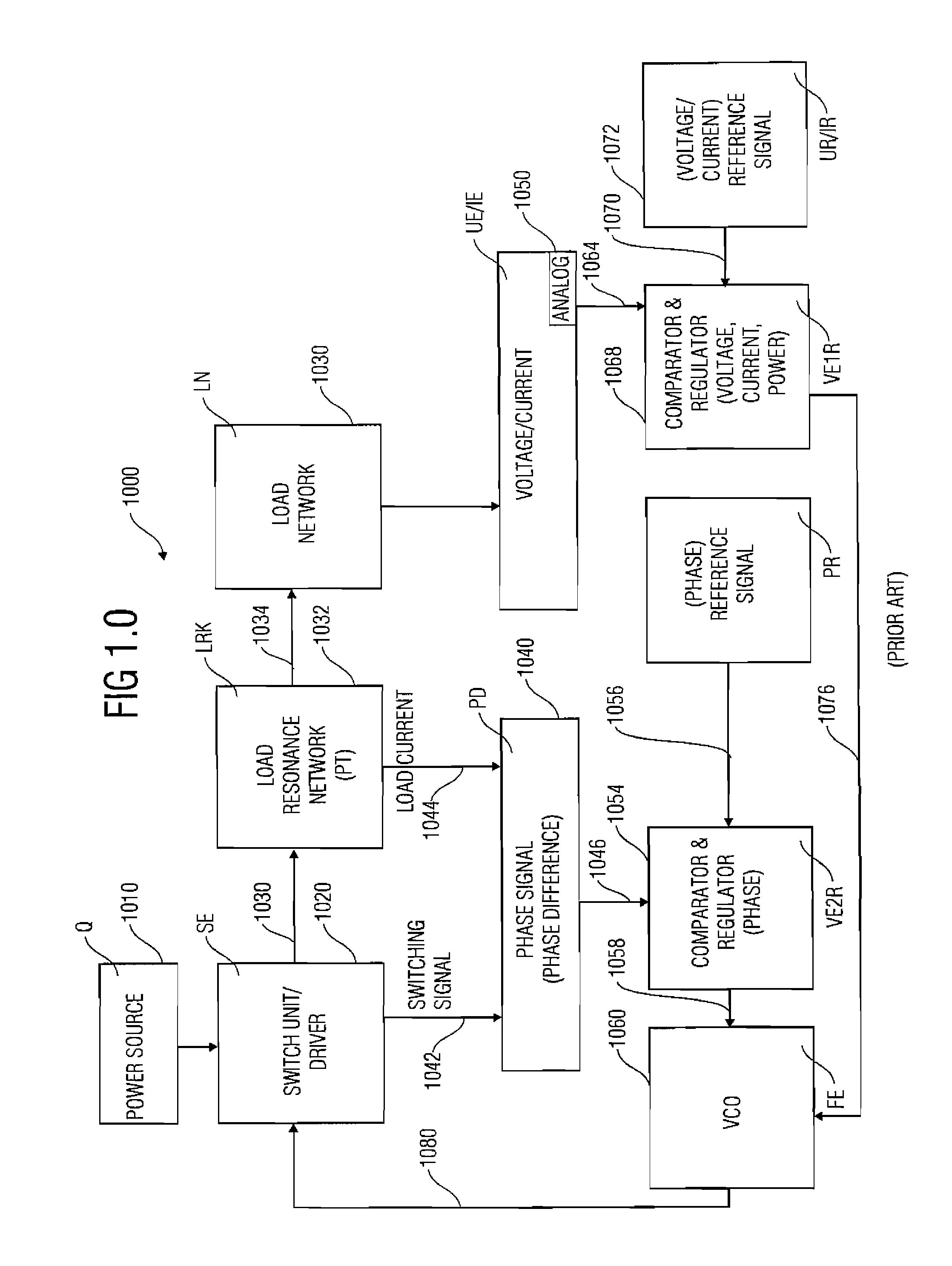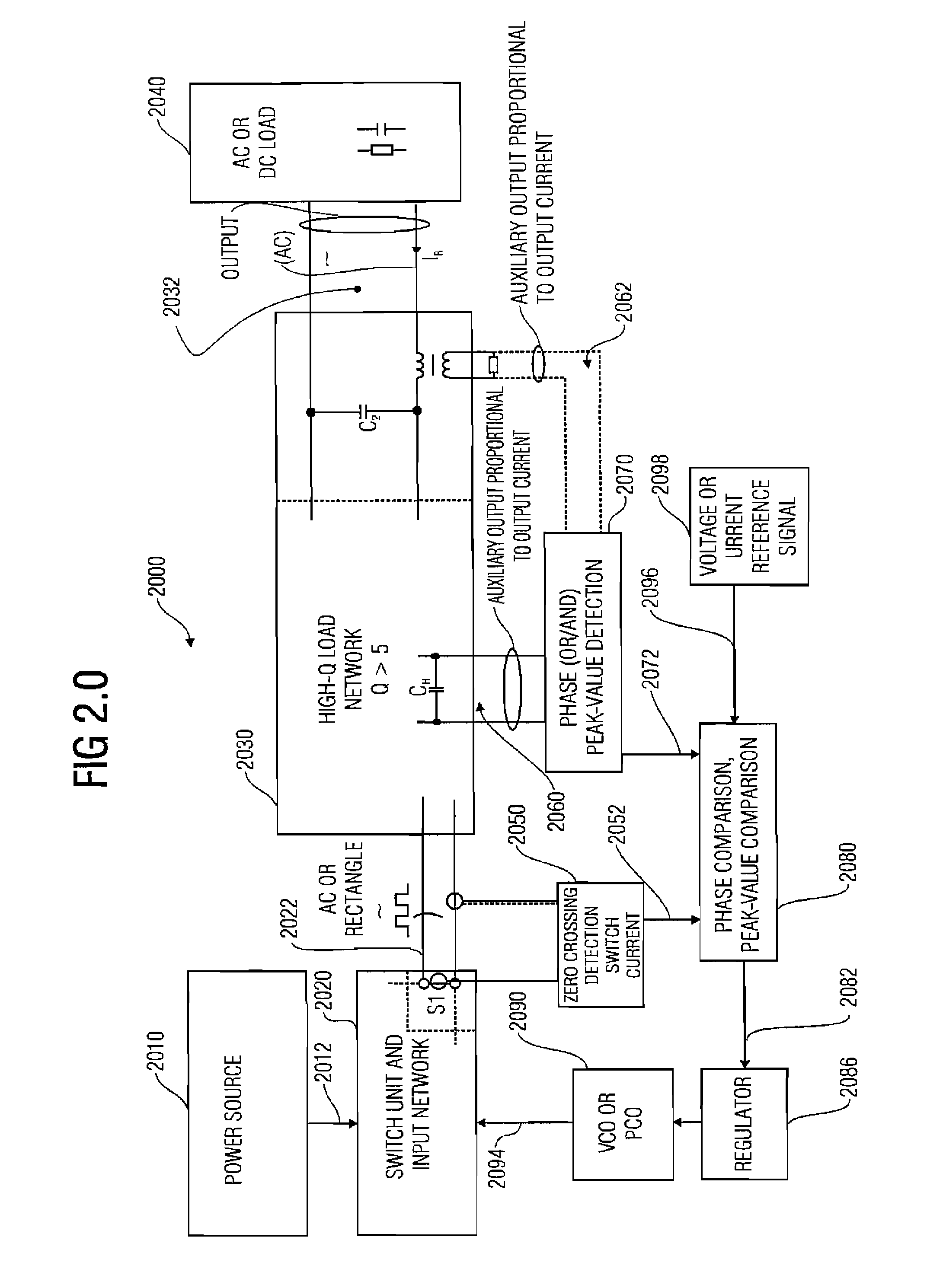Control circuit for a switch unit of a clocked power supply circuit, and resonance converter
a control circuit and power supply circuit technology, applied in the direction of electric variable regulation, process and machine control, instruments, etc., can solve the problems of high level of power dissipation of conventional transformers, structural height of conventional electromagnetic transformers, and the cost of constructing integrated magnetics in the power range below about 50 watts is clearly too high in comparison with a discretely structured circuit. , to achieve the effect of low cos
- Summary
- Abstract
- Description
- Claims
- Application Information
AI Technical Summary
Benefits of technology
Problems solved by technology
Method used
Image
Examples
Embodiment Construction
[0143]To facilitate understanding of the present invention, various circuitries will be described below which enable generation of input-side excitation of a resonant transformer arrangement. The circuitries mentioned do indeed form part of the prior art, but it has turned out that they exhibit particular advantages specifically in connection with the inventive control concept, or regulation concept. All circuitries described using FIGS. 1A, 1B, 1C, 2A, 2B, 2C, and 2D may therefore form an input network of the circuitries according to FIGS. 2.0, 2.1, 3F, 3G, 3H, 5, 6, 9, 12, 13B, 14, 16.
[0144]For example, FIG. 1A depicts a circuit diagram of a half-bridge circuit for generating input-side excitation for a resonant transformer arrangement.
[0145]The circuitry of FIG. 1A is designated by 100 in its entirety. Circuitry 100 includes a voltage source 110, the first terminal of which is coupled to a first input node 114 of the resonant transformer arrangement via a switch 112 (S2). A secon...
PUM
 Login to View More
Login to View More Abstract
Description
Claims
Application Information
 Login to View More
Login to View More - R&D
- Intellectual Property
- Life Sciences
- Materials
- Tech Scout
- Unparalleled Data Quality
- Higher Quality Content
- 60% Fewer Hallucinations
Browse by: Latest US Patents, China's latest patents, Technical Efficacy Thesaurus, Application Domain, Technology Topic, Popular Technical Reports.
© 2025 PatSnap. All rights reserved.Legal|Privacy policy|Modern Slavery Act Transparency Statement|Sitemap|About US| Contact US: help@patsnap.com



